PowerPoint 2010 -
Arranging Objects

PowerPoint 2010
Arranging Objects


/en/powerpoint2010/formatting-pictures/content/
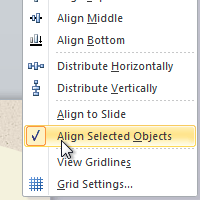
In PowerPoint, each slide may have multiple items, such as pictures, shapes, and text boxes. PowerPoint lets you arrange the objects the way you want by aligning, grouping, rotating, and ordering them in various ways.
In this lesson, you will learn how to align objects across the slide, group multiple objects into one object, and order objects from front to back.
After adding objects to a slide, it may be necessary to arrange them so the objects appear the way you want. You can align, group, rotate, and order objects to create the desired arrangement.
Optional: You can download this example for extra practice.
You can click and drag objects to align them manually, but guesswork will never give you the best result. Additionally, aligning objects in this way can take a great deal of time. Luckily, PowerPoint provides you with several commands that allow you to easily arrange and position objects.
 Selecting multiple objects
Selecting multiple objects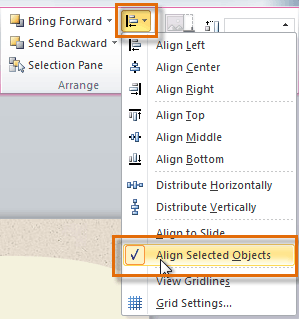 Choosing Align Selected Objects
Choosing Align Selected Objects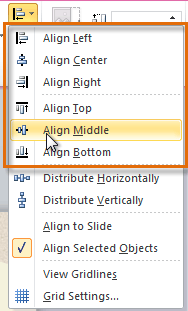 Choosing an alignment option
Choosing an alignment option The aligned objects
The aligned objectsSometimes you may want to align one or more objects to a specific location within the slide, such as the top or bottom. You can do this by selecting the Align to Slide option before you align the objects.
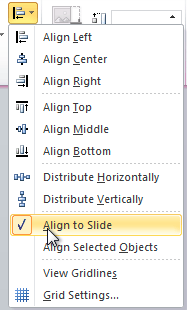 Selecting Align to Slide
Selecting Align to Slide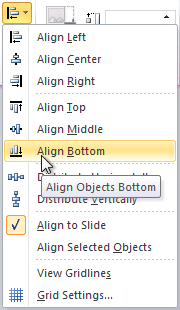 Aligning objects to the bottom of the slide
Aligning objects to the bottom of the slide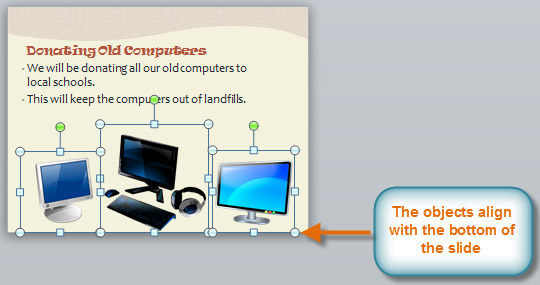 The aligned objects
The aligned objectsIf you have arranged objects in a row or column, you may want them to be an equal distance from one another for a neater appearance. You can do this by distributing the objects horizontally or vertically.
 Selecting multiple objects
Selecting multiple objects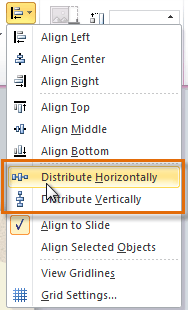 Choosing a distribute option
Choosing a distribute option Objects distributed evenly
Objects distributed evenly
In addition to aligning and grouping objects, PowerPoint gives you the ability to arrange objects in a specific order. Ordering is important when two or more objects overlap because it will determine which objects are in the front or back.
 The selected object
The selected object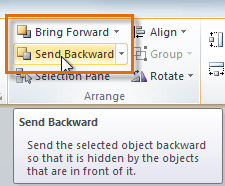 Sending an object backward
Sending an object backward The reordered objects
The reordered objectsIf you want to move an object behind or in front of several objects, it's usually faster to bring it to front or send it to back rather than clicking the ordering commands multiple times.
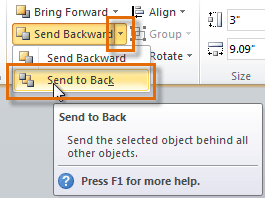 Sending an object to the back
Sending an object to the back The reordered objects
The reordered objects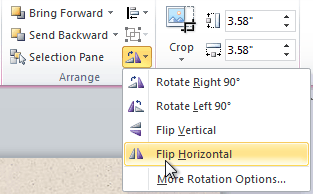 Selecting a rotation option
Selecting a rotation option The rotated image
The rotated image
Sometimes you may want to group multiple objects into one object so they will stay together if they are moved. Often, this is easier than selecting all of the objects every time you want to move them.
Pictures, shapes, clip art, and text boxes can all be grouped together, but placeholders cannot be grouped. Therefore, make sure not to insert your pictures into placeholders if you will be grouping the pictures.
 Selecting multiple objects
Selecting multiple objects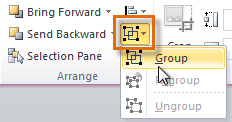 Grouping objects
Grouping objects The grouped objects
The grouped objectsIf you select the objects and the Group command is disabled, it may be because one of the objects is inside a placeholder. If this happens, try reinserting the images or cutting and pasting them into the same slide outside of any placeholders.
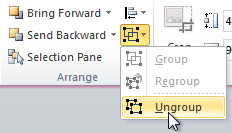 Ungrouping objects
Ungrouping objects The ungrouped objects
The ungrouped objects
/en/powerpoint2010/animating-text-and-objects/content/